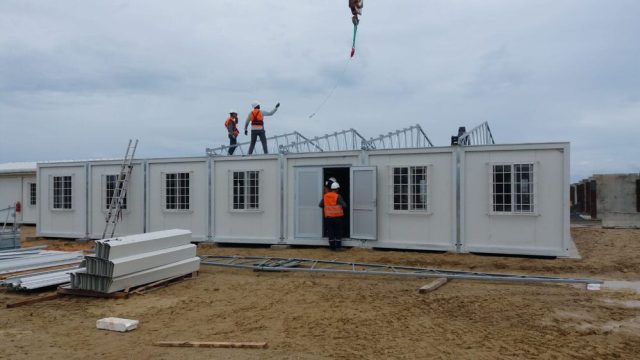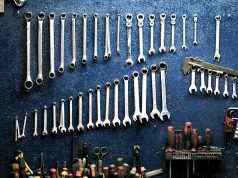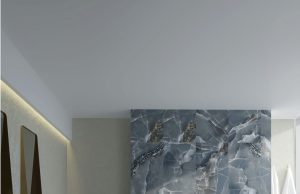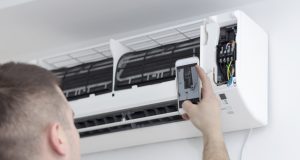
Why Are More Companies Turning to Prefab Construction?
Moving the traditional building process away from the site and into a factory has existed for many years – even Gustave Eiffel used pre-manufactured segments in the building of the Eiffel Tower! Although prefabricated construction isn’t new, early prefab structures were considered substandard compared to traditional brick and cement-built structures. For many, the mention of prefabricated buildings conjured up images of basic make-shift buildings, dingy solitary toilet cabins, and make-shift offices, but thankfully, that mindset is now changing.
Modern modular constructions are built to such a high standard that they can outperform and often outlast traditional builds in many cases. With technological advancements and the use of top-quality, sustainable materials and new-wave production processes, prefabricated buildingsnow offer a savvy, timesaving, cost-effective solution for those who want to expand existing facilities, accommodate a workforce, or create space for an industrial or commercial team. Modular constructions boast many advantages over their conventional counterparts, so much so that they are now reshaping the construction industry. Modular constructions are making a significant impact on the affordable housing and industrial construction sector for a good reason, and this trend will continue well into the future.
What Are Prefabricated Buildings and Where Can They Be Used?
Prefabricated building (modular construction) is a process whereby all the structure and all the components of a building are manufactured remotely, flat-packed, and then shipped to the location for assembly and use. Each building component is of uniformly high quality and precision made to adhere to building regulations in the EU, US, and UK. Once they are joined or connected, the components form a fully functional, highly durable 3-D building that can be joined, linked, or stacked to create the required space. This process is quick, regulated, and streamlined for savings, making modular constructions ideal for many uses. Popular uses for prefabricated buildings include the buildings used to create work camps for temporary construction, mining or industrial sites, lockers and sanitary facilities for sports stadiums and arenas, additional classrooms for schools, accommodation for disaster zones, point-of-sale kiosks on forecourts, or WC and toilet buildings at events or film sets.
What Are the Important Advantages of Prefabricated Structures?
Prefabricated Buildings enjoy many advantages. The main benefits include the following:
- Financial Savings
A modular building is typically up to 50% cheaper than a traditional building making it a viable option if you are on a tight budget. The savings also carry on after purchase as the building’s insulation ensures the structures are energy efficient, resulting in significant long-term savings on utility bills.
- Quality Assured
The technology and quality materials used to manufacture each component of a prefab building are quality controlled, meaning each section is of consistently high quality.
- No Bad Weather Delays
Traditional construction sites often experience many days of downtime due to bad weather. This costly time delay is eliminated with modular construction as the components are manufactured remotely in a covered factory environment.
- Time Efficient
Lousy weather, unreliable contractors, and delayed delivery of materials all hinder traditional builds, often making the project run many days or weeks behind schedule. In contrast, the prefabricated building process is done remotely in a controlled environment ensuring the building is ready for delivery on time.
- Less Onsite Disruption
Modular constructions are designed, built, manufactured remotely and delivered to your site for assembly. Most prefabs require minimal foundations, and what is necessary can be laid in just a few hours or days, dramatically reducing onsite risk and disruption.
- Less Material Waste and Emissions
Traditional building sites create a lot of waste that often ends up in landfill, and it also requires the use of heavy construction machinery that generates a lot of harmful emissions. Prefabricated buildings, however, are built in a factory where technology ensures waste and emissions are kept to a minimum.
- The Buildings Can Be Customised
Prefabricated buildings come in standard sizes designed for specific uses, each of which can be highly customised during the design stage. The structures can be optimised with additional security and insulation. You can choose the flooring, window styles, décor, fixtures, and fittings, or even add cabinetry, sanitary facilities, or heating and cooling systems if necessary. All the utility and technology points and sockets are precut and ready for connection, and a wide range of other features can be added as wished.
- You Can Relocate Prefabricated Buildings
Prefab structures are designed to be versatile and withstand transportation and multiple assemblies. Each can be erected in just a few hours, and they can equally be dismantled and relocated if necessary, making them ideal as buildings for use on temporary sites or in remote locations.
- Highly Durable
Prefab constructions are built to last and survive transportation and exist in any location, even areas of extreme climatic change.
Learn More About Prefabricated Buildings Construction From Module-T!
If you wish to know more about prefabricated buildings, please see our website or contact Module-T.













